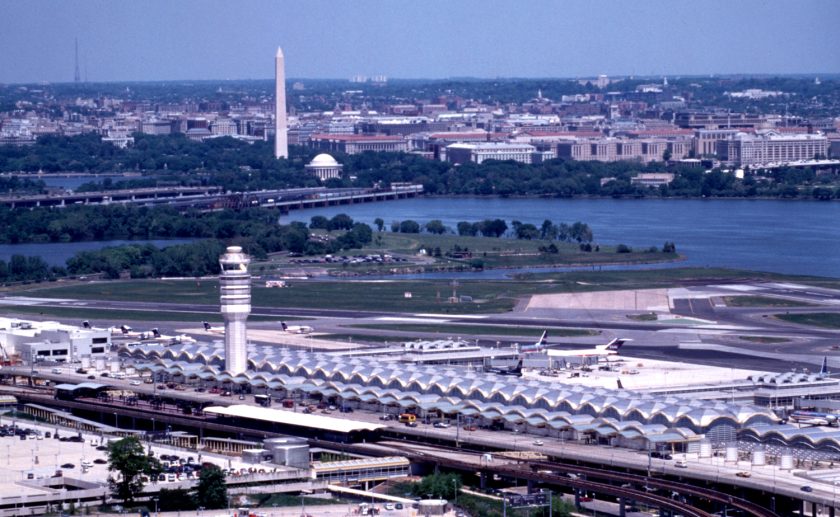US House Democrats Rep. Rick Larsen of Washington and Rep. Bennie Thompson of Mississippi have written to the department of Homeland Security and Transportation secretaries regarding the use of counter-uncrewed aerial systems (C-UAS) technology by the US Secret Service (USSS).
The letter, dated April 14, notes that the USSS’ C-UAS technology recently triggered air traffic control alerts at Washington National Airport (DCA). Larsen and Thompson said that these alerts made erroneous recommendations to several commercial and Coast Guard aircraft. The matter is particularly sensitive in light of the fatal crash at DCA airport in January and the House Representatives say the airport has been “plagued with near misses” and other safety challenges since.
The letter states that according to information shared by the Federal Aviation Administration (FAA), the USSS allegedly breached its lawful obligations when it violated agreed-upon operating parameters and failed to comply with notification requirements.
“During the first week of March 2025, a series of TCAS alerts—automated warnings that advise a pilot on actions needed to avoid an imminent collision—incorrectly recommended ten resolution advisories and three aircraft go-arounds to commercial and US Coast Guard aircraft in the vicinity of DCA,” the letter states. “Shortly thereafter, the FAA’s spectrum analysis identified that an activation of USSS C-UAS technology at a nearby Department of Defense location was the cause of these false alerts. The FAA confirmed that the system in question was approved for operation within a specific radio frequency parameter and with the necessary filtering to prevent interference into adjacent spectrum bands, to which the USSS allegedly agreed. However, the FAA determined that despite its pre-deployment coordination with the USSS, the agency operated this C-UAS system outside of the agreed-upon requirements.
“Even more troubling, the FAA did not receive any notifications from USSS about this C-UAS activation, in violation of the Department of Homeland Security’s (DHS) Concept of Operations (CONOPS).”
Larsen and Thompson are calling on the departments of Homeland Security and Transportation to work together to determine all contributing factors to these incidents and develop a plan to prevent similar incidents from happening again at DCA or any other US airport. They request a briefing no later than April 21 and written responses to the following questions:
- What unmanned aircraft system (UAS) detection and/or mitigation system(s) was activated by the USSS during this incident that caused the TCAS anomalies near DCA?
- Was the deployment of the system(s) in question part of a testing effort by the USSS as reported or in response to a potential UAS threat?
- What were the FAA’s specific operating parameters for the safe deployment of such system(s) and when were these requirements communicated to the USSS?
- During your pre-deployment coordination, did the USSS agree to the FAA’s operating parameters? If so, when? If not, what is the USSS’ rationale for not complying with these terms, and when was this communicated to the FAA?
- Did the USSS notify the FAA of the activation of the UAS detection and/or mitigation system(s) in accordance with the CONOPS? If so, when and through what means?
- When did the USSS first become aware of the TCAS anomalies at DCA, and what actions did the agency take with FAA to mitigate the impacts?
- Was there radio frequency interference into any other spectrum bands during this incident?
- In light of these incidents, has DHS reviewed all its C-UAS systems to ensure compliance with radio frequency parameters and filtering requirements? If so, what were the findings of this review?
- What communications has the FAA provided to all operators of C-UAS systems to notify them of lessons learned and prevent the recurrence of similar incidents?
- What actions are your Departments taking to improve your interagency coordination on C-UAS missions and compliance with the CONOPS?
Larsen and Thompson say that they recognise the key roles played in protecting critical facilities and assets from the growing threats of malicious drone incursions. “However, these security efforts cannot come at the expense of the safety of the flying public and airspace users. As such, we continue to support the passage of our bipartisan legislation, the Counter-UAS Authority Security, Safety, and Reauthorization Act.”
For more information
Full letter on the use of C-UAS technology near DCA at the House Committee on Transportation
Image: DCA (Metropolitan Washington Airports Authority)




